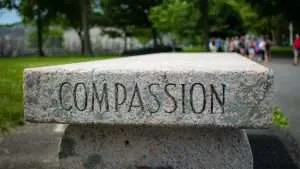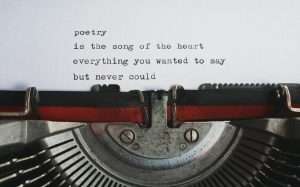How is the virtual dance community adapting during COVID-19?
Amid the COVID-19 pandemic, many folks are practicing social distancing, as they should be, and sociologists have been at the forefront of discussions acknowledging the potentially negative consequences of such precautions. Many folks are worried that distancing ourselves from our communities may lead to loneliness and increased feelings of depression or anxiety.
This worry may stem from the fact that we are not only distancing ourselves from other humans, but also from the activities we engage in that are often incredibly important to our mental health. For those of us that rely on those activities to regulate our mood or stress-levels, social distancing may be devastating to our mental health. For me, that activity has always been dancing.
Dancing: Beyond Simply an Activity
For many dancers, dance is not simply an activity we do for fun or exercise. It goes far beyond a fun and fashionable way to work up a sweat. Dance is our space to release tension in our minds, bodies, and spirits. It is a place that always allows us to express ourselves freely and come away from that expression feeling like we were able to say everything without actually saying anything.
I have heard dancers time and time again say that through dance, they have learned to express themselves through movement, rather than through words. It can be hard for folks who are used to expressing themselves through movement to find other ways to release the stress or tension they are feeling.
Virtual Dance Community and their Response to COVID-19
With all this said, the dance community’s response to the current need for social distancing has been absolutely amazing. I teach at a local studio that was lucky enough to conveniently have a two-week Spring break planned for dance classes. However, the studio was planning to continue their many fitness classes over those two weeks but ended up deciding to offer those classes virtually rather than risk the health of their community members.
The ability to offer services digitally has been a life saver for many small businesses, like the studio I work at, that are able to remain open during these uncertain times. It has also been a life saver for the many dancers who rely on their weekly or daily movement to maintain their mental health.
In the few days since social distancing has been encouraged in the U.S., I have seen multiple dance platforms offering FREE live virtual classes online. For example, CLI Studios started a #KeepDancing initiative by offering free live classes on their website for all the dancers across the world who are not able to attend classes at their studios during this pandemic. CLI Studios’ vision is centered around providing remote access to classes with some of the most sought-after teachers and choreographers in the industry.
Therefore, it was not hugely surprising when they opened their virtual doors to all the dancers out there yearning to move during these times of self-quarantining having already had the infrastructure in place. What was less surprising was other platforms offering similar experiences for the first time ever.
Local Dance Studios
The local dance studio I teach at is one example, while State Street Ballet live-streaming their March 13th in-studio performance of Sleeping Beauty is another. Break the Floor Productions is yet another example having just announced they are introducing the world’s first virtual dance convention set to take place the weekend of April 4th. BTF Productions is home to many well-known dance conventions in the U.S., such as JUMP, NUVO, and 24 Seven.
Summary of Dance Industry
For those less familiar with the competitive dance world, dance conventions are weekend-long events that hold dance classes all day—including ballet, jazz, hip-hop, tap, contemporary, and lyrical classes to name some—and usually involve some sort of performance or competition in the evenings. These competitions typically involve dancers performing large group, small group, and solo routines in front of judges who provide them with scores based on technique, performance, and more.
The weekend usually ends with announcements of scholarships and special awards that can provide dancers with anything from free dance classes at professional studios in New York or Los Angeles to free registration for the next year’s regional convention. In short, dance conventions provide important opportunities for passionate dancers hoping to extend their training beyond what is locally offered.
Virtual Dance Community in Action
A virtual convention is such an exciting and necessary addition to the competitive dance world, which can suck a ton of financial resources from families due to travel expenses involved. The conventions are expensive enough to attend as is without the travel and lodging expenses associated with them.
There are certainly downfalls to holding these types of events virtually, but I am excited to see how this new approach may provide more accessibility to the competitive dance world! I am also eager o see how BTF productions will hold competitions and scholarship auditions, both of which are mentioned in the announcement for their virtual convention.
With all the buzz around these free virtual classes, I decided to tune in to the first class that was held by CLI Studios on March 16th at 6pm EDT. When I tuned into the first class offered by world-renowned contemporary dancer Kathryn McCormick there were already 12.1K dancers tuning in. Kathryn started her class with a grounding and breathing exercise and at one point asked those tuning in to take a moment to look around, acknowledging that “we’re all in completely differences spaces than we usually are.”
After a brief warm up, she moved into teaching choreography for a contemporary dance combination. Initially, I was worried I would not have room to benefit from the experience. Although space was tight, the choreography generally did not travel much, which I assume was intentional on her part given that most of us around the world are cooped up at home. I was not able to dance as full out as I would have liked, but I was still able to move, learn, and experience some peace amidst the chaos during those blissful moments of movement.
NYC Ballet on Instagram
I also ended up tuning into one of NYC Ballet principal dancer Tiler Peck’s Instagram Live classes, and later found out many of my old dance students took the class as well. This shared experience left me feeling even more connected to my global dance community during this time of isolation.
Although I only had room for the ballet barre portion of the class (see Instagram video below), I was able to meditate through movement for a short time with thousands of other dancers around the world. Over the past couple of days, I have continued to see free classes offered via social media live features to keep dancers uplifted through these trying times. It has been absolutely amazing to witness these beautiful acts of community commitment.
I have also seen a lot of discourse discussing how forcing our world to function virtually could have negative consequences if those practices continue. Folks are stressing that we need to interact face-to-face and interacting via digital platforms does not replace real human interaction—but, who is to say what interactions count as real? I am a sociologist after all, so on some level I’m obligated to agree that in-person, face-to-face human connection is important.
Yet, I would argue that I experienced legitimate social benefits from the virtual dance classes I took. Perhaps nothing can replace your fellow dancers cheering you on when you nail the choreography or pour your heart out on the floor—and I would definitely argue that there is a healing vulnerability that occurs when you dance like no one is watching when in fact people are watching—but would it really be that bad to have a virtual alternative for those days when that vulnerability is too much?
Beyond the Virtual Dance Community
Outside of the dance world, think of all the mental health days the many office workers might be willing and able to take if we continued with some of the virtual and remote work practices we are currently adopting. On those day, folks would not actually have to get out of bed to complete their tasks for the day if they felt they couldn’t. They would not have to put on a happy face under obligation from their workplace culture.
Sure, it is not really a day off, but it certainly takes the pressure off of pretending you feel okay when you actually feel like nothing is okay. Do I think a complete shift to virtual interactions would be healthy? No. But, I do think virtual options could provide a healthier balance and increased accessibility for many folks—and the dance community’s actions throughout this pandemic are great examples of those possibilities.
In my opinion, there is no easy answer as to whether or not a digital world threatens our human connections. So instead, I will end this piece with the classic sociological answer to everything: “it depends.”







